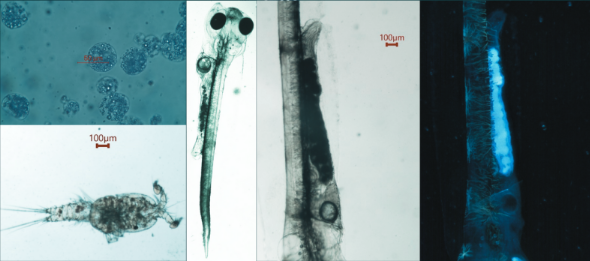AquaSnow - the bridge to the adjascent possible
Our first collaboration is the perfect example of how progress can be achieved by peeking next door, and checking what others are doing.
Carlos A. Espinal
7/26/20253 min read


When the Adjacent Possible Becomes the Mission
The adjacent possible is something I stumbled upon while reading that immediately made sense. It seemed applicable, real. Of course, you can always cherry-pick history to support any pattern, but with this adjacent possible idea, the cherry-picking becomes more and more frequent. It's everywhere once you start looking.
For me, it also meant rethinking what innovation even is. I used to be drawn to innovation as something messianic: paradigm-shifting jumps that change everything. But that kind of thinking is often just an inflated ego talking. That idea of revolutionary innovation feeds on our societal obsession with originality and individuality. We want to be the ones who came up with the Big Idea, the new thing. In doing so, we ignore existing knowledge that’s already out there, waiting to be combined in new ways.
That’s not how progress works.
So, as ChimanaTech starts and I reflect on the type of businesses and teams I would like to work with, I start seeing the pattern: It is all about companies right next to our door in aquaculture, peeking through.
Enter AquaSnow
AquaSnow is one of those companies. It’s a project started by Marleen Vrij and Huub Fransen from the Netherlands, and it’s one of the most vivid cases of the adjacent possible I have seen.
AquaSnow came from outside aquaculture. They developed a new particle formation process from a completely different industry. And that process, when applied to aquaculture feed, showed the potential to solve one of the core bottlenecks in larval rearing: how to make something tiny enough, attractive enough, and stable enough to feed to very small larvae.
The magic comes when noticing AquaSnow had a limited aquaculture background. They didn’t know what they “weren’t supposed” to try. They brought ideas and assumptions from a different world. Ideas that even got rejected a few times. With perseverance, those ideas turned into prototypes that, quite frankly, raise eyebrows in almost every aquaculture professional I have talked to.
Is AquaSnow proven? No. Not yet. It’s still early. We’re at the stage where interesting things happen. Across different species, the larvae seem to like the product. It’s highly attractable, and larvae search for it even if its not moving like an Artemia nauplii or a rotifer. That kind of serendipitous fit is exactly what the adjacent possible often looks like in real time. A bit more of that obstinate perseverance and who knows, maybe a exciting new product will be available to hatcheries in Europe and the rest of the world in a few years.
Where ChimanaTech Enters
After years of research, AquaSnow had a prototype. What they didn’t have was path into the aquaculture sector. They needed a roadmap, a strategy, and most importantly, a sequence of credible trials: starting small and informal, then growing in scale, cost, and trust. Funding, too.
That’s what we’re building now. We’re assembling trial partners, aligning protocols, applying for grants, and mapping out how to test the product’s performance while building the credibility it will need to enter a very conservative market.
Will it work? We don’t know. But the AquaSnow team surely try their best.
Closing thoughts
I was first very excited by AquaSnow as a business. Now I am as excited about the story behind it.
It’s a reminder that you don’t always need 20 years in a field to come up with something powerful. Sometimes, it's the naivety — the not-knowing of "how things are done" that lets you try what everyone else would discard. And sometimes, that works.
And that’s where I saw a role for ChimanaTech to grow into. Not just as a RAS engineering firm or aquaculture consultancy, but as a connector of the adjacent possible. A business that helps ideas from the outside world peek in and helps aquaculture peek back out.
We are, too often, stuck in our own knowledge loops. We mistake “best practice” for “only practice.” But if we want aquaculture to evolve, we need to get ideas and knowledge flowing between our aquaculture bubble into sectors close to us.
ChimanaTech
Chimana Management BV
Hemelrijk 2A
5281PS
Boxtel
The Netherlands
carlos@chimana.tech
+31 612 769 754
© 2025. All rights reserved.
